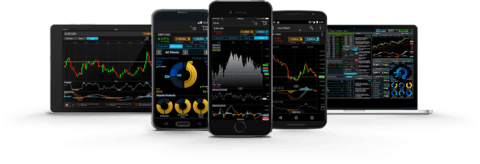CFD Trading in Times of Economic Uncertainty: Strategies for Stability

Economic uncertainty can send ripples of volatility through financial markets, creating a challenging environment for investors. However, it also presents unique opportunities for those who know how to navigate the storm. One such opportunity lies in Contract for Difference CFD trading. This form of trading allows investors to speculate on the price movements of various financial instruments without owning the underlying assets. In times of economic turbulence, having a well-thought-out strategy for CFD trading can provide stability and even profitability. Here, we explore effective strategies for CFD trading during periods of economic uncertainty.
Understanding CFD Trading
Before diving into strategies, it’s crucial to understand the basics of CFD trading. A Contract for Difference is a derivative product that enables traders to speculate on the price movement of assets such as stocks, commodities, indices, and currencies. Instead of purchasing the asset itself, a trader enters into a contract with a broker to exchange the difference in the asset’s price from when the contract is opened to when it is closed.
CFD trading offers several advantages, particularly in volatile markets:
Leverage: CFDs allow traders to control a large position with a relatively small amount of capital.
Short Selling: Traders can profit from falling markets by going short.
Diverse Markets: CFDs cover a wide range of markets, allowing traders to diversify their portfolios easily.
Strategies for Stability in CFD Trading
1. Risk Management
Risk management is the cornerstone of successful CFD trading, especially during uncertain economic times. Here are a few risk management techniques to consider:
Stop-Loss Orders: Setting stop-loss orders can help limit potential losses by automatically closing a trade at a predetermined price level.
Position Sizing: Carefully consider the size of each trade relative to your overall portfolio. Avoid risking more than a small percentage of your total capital on a single trade.
Diversification: Spread your investments across various asset classes and markets to reduce exposure to any single market’s volatility.
2. Fundamental Analysis
In times of economic uncertainty, understanding the underlying factors driving market movements can provide a significant edge. Fundamental analysis involves evaluating economic indicators, financial statements, and news events to forecast future price movements. Key economic indicators to watch include:
GDP Growth: Slowing GDP growth can signal economic troubles ahead, impacting a wide range of markets.
Inflation Rates: High inflation can erode purchasing power and affect asset prices.
Interest Rates: Changes in interest rates by central banks can influence currency values and stock prices.
By staying informed about these indicators, traders can make more informed decisions and identify potential trading opportunities.
3. Technical Analysis
Technical analysis involves studying historical price charts and using various indicators to predict future price movements. During volatile times, technical analysis can be particularly useful for identifying short-term trading opportunities. Common technical indicators include:
Moving Averages: Help smooth out price data and identify trends.
Relative Strength Index (RSI): Measures the speed and change of price movements to identify overbought or oversold conditions.
Bollinger Bands: Use standard deviations to measure price volatility and identify potential reversal points.
Combining multiple indicators can provide a more comprehensive view of market conditions and help traders make better-informed decisions.
4. Staying Informed
Economic uncertainty often brings rapid changes in market conditions. Staying informed about global events, economic policies, and market sentiment is crucial for CFD traders. Use reliable news sources, economic calendars, and financial analysis tools to keep abreast of developments that could impact your trades.
5. Adapting to Market Conditions
Flexibility and adaptability are key traits of successful CFD traders. Economic uncertainty can lead to sudden and unexpected market movements. Being able to adjust your trading strategies in response to changing conditions can help you stay ahead of the curve. Consider using both long and short positions to take advantage of market swings.
Conclusion
CFD trading during times of economic uncertainty can be both challenging and rewarding. By employing robust risk management techniques, conducting thorough fundamental and technical analysis, staying informed, and remaining adaptable, traders can navigate volatile markets with greater confidence and stability. While no strategy can eliminate risk entirely, a well-planned approach can help mitigate it and increase the potential for success.